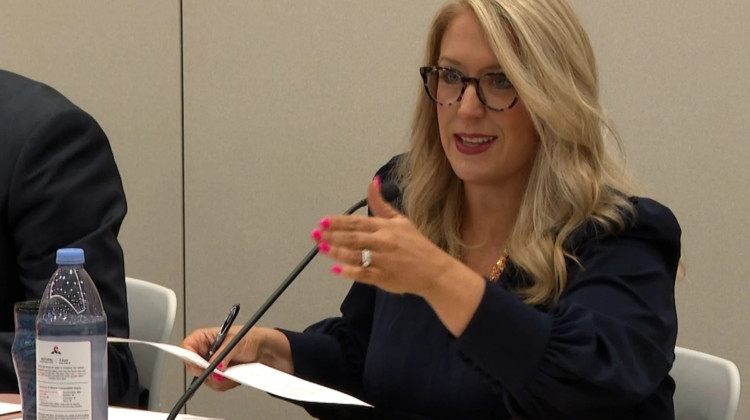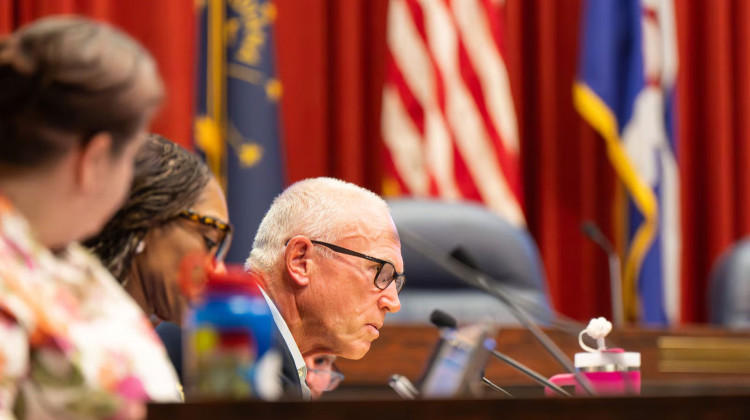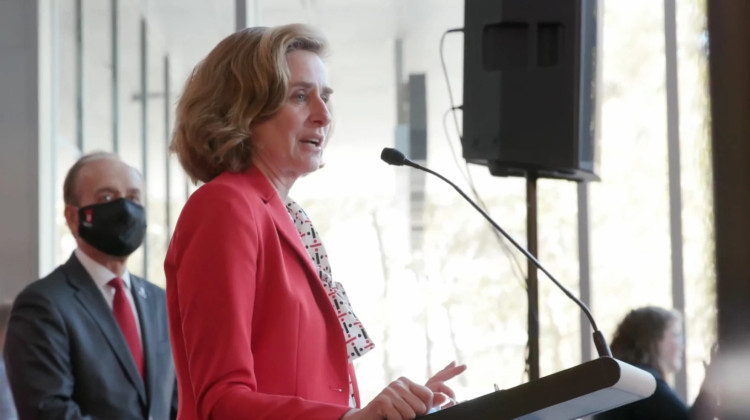
In 2021, only 10 percent of students at Indianapolis Public Schools in grades 3-8 passed both the math and English parts of the ILEARN state standardized test.
(Eric Weddle/WFYI)Parents addressed the Indianapolis Public Schools board Thursday to raise alarm over the gaps in academic performance of students of color compared to their White classmates. Parents are demanding the IPS leaders provide research by July that outlines which district schools have a track record of improving test scores for Black and Brown children and those from low-income families.
“We need to do everything we can to partner with schools that close the gap and to learn from the schools where those children are thriving,” said Shawanda Tyson, a parent of two children.
Tyson and others at the meeting are part of the parent-organizing group Stand for Children Indiana, who has led efforts to improve low performing IPS schools. They delivered more than 100 pages of emails calling for the district to create schools that focus on improving academic outcomes for the city’s children.
Last year these parents drafted a document that details academic goals they would like students to achieve. The plan received over 1,200 signatures from community members. IPS serves more than 31,000 students at traditional and charter schools.
The parents’ pleas come as the district has struggled to improve its standardized test scores for years.
In 2021, only 10 percent of IPS students in grades 3-8 passed both the math and English parts of the ILEARN state standardized exam. That was the second lowest passing rate out of the 11 Marion County districts. School Town of Speedway has the highest — 42 percent — and Warren Township Schools had the lowest pass rate — 8 percent.
Grade level proficiency of IPS students is even starker when disaggregated by racial demographics. In IPS, only 3 percent of Black students, 5 percent of Hispanic students passed both tests. That’s compared to 27 percent of White students and 29 percent of Asian students.
Last year some schools had a passing rate of less than one percent on both the math and English tests.
Now the Stand for Children organization and parents are asking the board of commissioners to create a plan this summer that details how they will partner with schools that demonstrated success in improving proficiency.
District leaders are already facing a steep challenges, from student academic performance and lack of opportunities, to underutilized school buildings. In September the district started a multi-phase community engagement initiative to determine how to improve schools while also reducing its budget before it reaches a $25 million annual deficit by 2027.
“I do want to thank you for all you’ve done so far and for giving parents and community members like myself a seat at the table,” Tyson said. “I am so glad you’ve had the community meetings. I have felt like you not only hear us, but you see us.”
But Tyson and other parents want to see more change.
IPS commissioners did not address the parents’ concerns during the meeting. But when discussing contract renewals for Herron Classical Schools — three charter schools that partner with IPS — board member Will Pritchard said the district could learn more from the network.
“I would be really curious to have a plan in place that would share what they’re doing with some of our district-managed schools so we can really fulfill this innovation concept by collaborating closely, sharing best practices [and] sharing lessons learned,” Pritchard said of Herron.
During the board meeting Tuesday, IPS staff said they will begin working with high-performing schools next month, so they can apply some of the teaching strategies at those schools to low-performing IPS schools.
Last summer the district approved multiple board goals, which aim to increase the math and ELA ILEARN scores to a 50 percent passing rate for Black and Latinx students by 2025. The board also pledged to increase the percentage of students who graduate within four years from 82.39 percent to 87 percent, and increase IPS schools’ family engagement to 100 percent.
Contact WFYI education reporter Elizabeth Gabriel at egabriel@wfyi.org. Follow on Twitter: @_elizabethgabs.
 DONATE
DONATE








 Support WFYI. We can't do it without you.
Support WFYI. We can't do it without you.